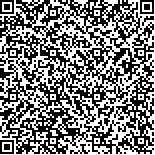| 引用本文: | 魏筱华,王可莉,刘红,朱万,彭洪薇,贺彦娜,曹端文.缬沙坦氨氯地平片在中国健康人体内的生物等效性研究[J].中国现代应用药学,2020,37(12):1483-1488. |
| WEI Xiaohua,WANG Keli,LIU Hong,ZHU Wan,PENG Hongwei,HE Yanna,CAO Duanwen.Bioequivalence Study of Valsartan/Amlodipine Combination Tablets in Healthy Chinese Volunteers[J].Chin J Mod Appl Pharm(中国现代应用药学),2020,37(12):1483-1488. |
|
| |
|
|
| 本文已被:浏览 9771次 下载 5069次 |

码上扫一扫! |
|
|
| 缬沙坦氨氯地平片在中国健康人体内的生物等效性研究 |
|
魏筱华1, 王可莉2, 刘红1, 朱万1, 彭洪薇1, 贺彦娜3, 曹端文4
|
|
1.南昌大学第一附属医院, 药学部, 南昌 330006;2.南京科利泰医药科技有限公司, 南京 210000;3.江苏恒瑞医药股份有限公司, 江苏 连云港 222047;4.南昌大学第一附属医院, GCP中心, 南昌 330006
|
|
| 摘要: |
| 目的 评价缬沙坦氨氯地平片受试制剂与参比制剂在中国健康人体内的生物等效性。方法 采用单中心、随机、开放、3周期、部分重复交叉设计。受试者经高脂高热餐后/空腹单剂量口服80/5 mg缬沙坦氨氯地平片受试制剂或参比制剂,采血至给药后72 h,周期间的清洗期为14 d。采用经方法学验证的LC-MS/MS检测血浆中缬沙坦和氨氯地平的浓度。选择Phoenix WinNonlin软件(8.0版本),以非房室模型计算缬沙坦、氨氯地平的药动学参数。采用参比制剂校正的平均生物等效性(reference-scaled average bioequivalence,RSABE)和平均生物等效性(average bioequivalence,ABE)方法评价缬沙坦的生物等效性,ABE方法评价氨氯地平的生物等效性。结果 缬沙坦在空腹条件下Cmax、AUC0-t、AUC0-∞和在餐后条件下Cmax的个体内变异系数均>0.294,采用RSABE方法,计算得到单侧95%置信上限<0和几何均值比估计值为80.00%~125.00%。缬沙坦餐后条件下的AUC0-t和AUC0-∞的个体内变异系数<0.294,采用ABE方法,受试制剂与参比制剂的AUC0-t、AUC0-∞经对数转换后的几何均值比值的90%置信区间均在80.00%~125.00%。综上,两制剂中的缬沙坦具有生物等效性。氨氯地平的Cmax、AUC0-t和AUC0-∞的个体内变异系数<0.294,采用ABE方法,受试制剂与参比制剂的Cmax、AUC0-t和AUC0-∞经对数转换后的几何均值比值的90%置信区间均在80.00%~125.00%,表明两制剂中的氨氯地平具有生物等效性。结论 缬沙坦氨氯地平片受试制剂和参比制剂在中国健康人体内具有生物等效性。 |
| 关键词: 缬沙坦 氨氯地平 液相色谱-串联质谱法 生物等效性 |
| DOI:10.13748/j.cnki.issn1007-7693.2020.12.015 |
| 分类号:R969.1 |
| 基金项目: |
|
| Bioequivalence Study of Valsartan/Amlodipine Combination Tablets in Healthy Chinese Volunteers |
|
WEI Xiaohua1, WANG Keli2, LIU Hong1, ZHU Wan1, PENG Hongwei1, HE Yanna3, CAO Duanwen4
|
|
1.The First Affiliated Hospital of Nanchang University, Department of Pharmacy, Nanchang 330006, China;2.Nanjing Kelitai Pharmaceutical Technology Co., Ltd., Nanjing 210000, China;3.Jiangsu Hengrui Medicine Co., Ltd., Lianyungang 222047, China;4.The First Affiliated Hospital of Nanchang University, GCP Clinical Trial Institution, Nanchang 330006, China
|
| Abstract: |
| OBJECTIVE To investigate the bioequivalence of generic formulation of valsartan/amlodipine combination tablets(test) and the original brand Exforge®(reference). METHODS This study was designed as single-center, randomized, open-label, single-dose, three-period partially repeating crossover. Subjects were randomized to receive a single oral dose of 80/5 mg of test or reference valsartan/amlodipine tablets according to randomized schedule under fasting or fed states. A 2-week washout period was applied. Blood samples were collected up to 72 h following drug administrations. Plasma valsartan and amlodipine concentrations were determined by LC-MS/MS. The pharmacokinetic parameters were calculated with the Phoenix WinNonlin software(version 8.0) based on non-compartmental analysis. Due to high variability, the bioequivalence of valsartan was evaluated using the reference-scaled average bioequivalence(RSABE) and average bioequivalence(ABE) method. The bioequivalence of amlodipine was evaluated by ABE method. RESULTS The within-subject standard deviations(SWR) of valsartan of the reference product for Cmax, AUC0-t, and AUC0-∞ under fasting states, and SWR for Cmax during fed were all >0.294, perinitting use of RSABE. The 95% upper confidence limit was <0 for all theses parameters, and the geometric mean ratio(GMR) values of generic/reference product for the point estimates of Cmax, AUC0-t, and AUC0-∞ were within the range of 80.00%-125.00%. SWR(valsartan) for AUC0-t and AUC0-∞under fed states were all <0.294, permitting use of ABE. The 90% confidence intervals for the GMR of AUC0-t and AUC0-∞ of valsartan were within the range of 80.00%-125.00%. In summary, valsartan in the two formulations was bioequivalent. The SWR(amlodipine) for Cmax, AUC0-t, and AUC0-∞ were all <0.294, permitting use of ABE. The 90% confidence intervals for the GMR of these parameters were within the range of 80.00%-125.00%, indicating bioequivalence. CONCLUSION The generic formulation of valsartan/amlodipine combination tablets is bioequivalent to the reference marketed brand. Both valsartan/amlodipine formulations were well tolerated. |
| Key words: valsartan amlodipine LC-MS/MS bioequivalence |
|
|
|
|
